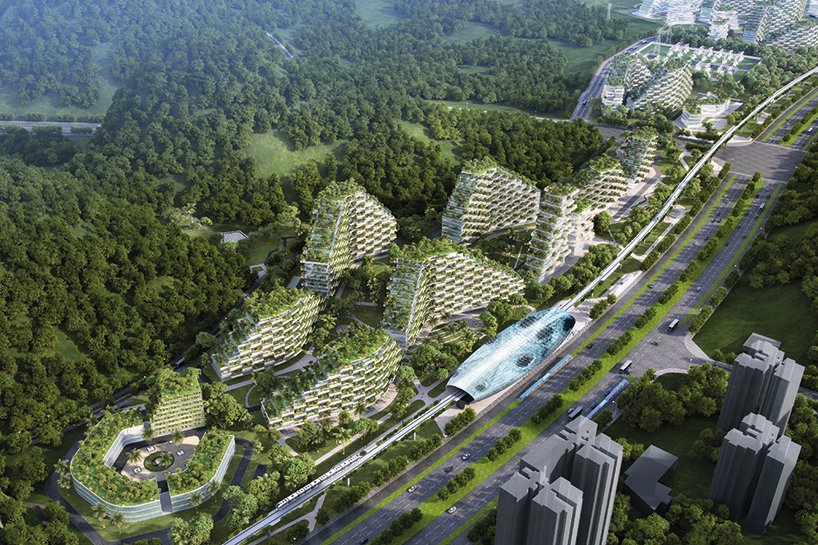A Chinese City Growing in New York’s Central Park?

The announcement attracted international headlines: a new Chinese city is being built--a "forest city." The Milan-based design firm hired by the urban planning department of Liuzhou, an inland city of 1 million residents an 11-hour train ride southwest from Shanghai, to develop the project at a mountainous site miles from the city provided impressive details: on 342 acres, 30,000 people would live in a full-services city with some 70 buildings, 40,000 trees, and almost 1 million plants. The city would run on renewable energy and connect to Liuzhou by electric trains. It would capture carbon and produce oxygen. A key to the design's greenery is that much of the forest will be vertical--planted along the walls and roofs of the buildings, much like the tree- and plant-covered towers the architects built in Europe and are building in another Chinese city.
The announcement arrived as I was researching and writing about the global spread of urban greening at multiple city scales, from building sites and streets to neighborhoods/districts and citywide, the urban ecology. The Liuzhou forest city, which is supposed to be ready for living by 2020, is more the size, by population, of a large, compact urban neighborhood, akin to some of the "low carbon" districts in a few cities. Stockholm's Royal Seaport district, under development for several years, is designed for 50,000 housing and office units.
Few, if any, new district designs have pushed so far toward incorporating greenery into the newly built environment. To get a sense of how much of a stretch this might be, I compared the Liuzhou statistics to those of Central Park in New York City. The forest city will contain twice as many trees as Central Park, but will only use 40 percent of the park's size--on which it will host buildings, people, roads, a railroad, an entire city neighborhood. Many more trees on much less land; that's what going vertical can get you.
Highly engineered urban green space is not new. Central Park was precisely that 160 years ago when it was designed, 1,600 residents were cleared off the land, steam-powered equipment and masses of unskilled laborers moved 10 million cartloads of material out of the park, and 4 million trees were moved in. But greened settlement at this scale--green and large enough, perhaps, to form a dynamic ecosystem--is an evolution of modern urban design. And it may be a life saver for China's future as a nation with 1-billion people living in cities. Project architect Stefano Boeri says the forest city offers China a new model for accommodating its rapidly growing urban population: build “a system of small, green cities” instead of just expanding and extending existing urban centers.


